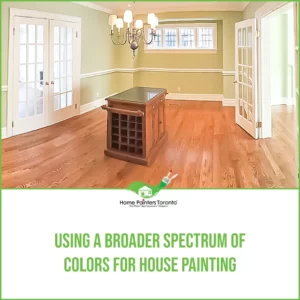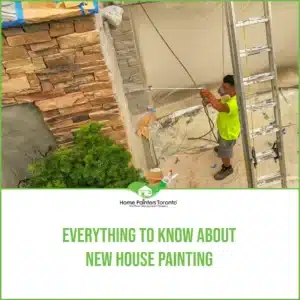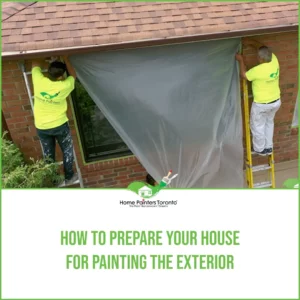
Most house painting or commercial painting projects go off without a hitch, but things don’t always go as planned.
Here are some of the most frequent painting flaws, their causes, and how to fix them.
6. Sheariness (Flashing)
The presence of visible roughness or uneven sheen in matte or mid-sheen paint finishes, particularly when viewed from a low or glancing angle.
Also, when shear is visible, it is usually at the “laps” of joins between adjacent pieces of work, and a typical reason is a failure to join up before the “wet edge” has been set. Sheariness may also be caused by variations in the porosity of the surface.
Thus, light flatting and an additional coat plus avoiding the preceding application flaw will typically correct the issue. In vast regions, roller application is less likely to result in sheariness than brushing.
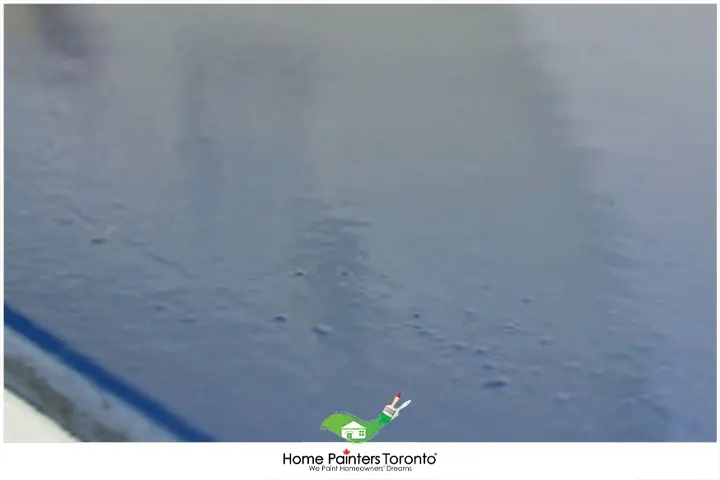
7. Saponification
Saponification is the effect of alkali on oil-based paints in the presence of moisture. Mild attacks cause the paint to soften and maybe discolour; severe attacks can entirely damage the paint.
Saponification of oil-based paints is caused by alkali in moist cement, concrete, lime plaster, asbestos, or similar materials and contact with alkaline solutions.
When saponification occurs, the surface must be scraped, cleaned, and dried adequately before repainting. Non-saponifiable specialty coatings may be necessary if the paint is anticipated to come into contact with alkaline solutions, as in some industrial situations.
8. Settlement
- •Long-term storage causes the solid ingredients of paints, mainly the pigment, to settle out.
- •The opacity and other qualities of the paint may be compromised if the settling material is not adequately reincorporated. For minor amounts of paint, thorough stirring with a broad-bladed stirrer using a lifting and thumping action is helpful.
- •A mechanical agitator is suitable for massive amounts. Flipping the containers at regular intervals will make a significant difference when storing paints that are known to settle.
9. Opacity
The inability of a paint system to conceal or erase the colour of the original surface or preceding paint.
It might be caused by employing too few applications, using an incorrect undercoat, excessive spreading, or uneven paint application. Other causes include excessive paint thinning and a failure to mix settled pigment by vigorous stirring.
More coats must be applied to correct the problem while avoiding any previous flaws in thinning, stirring, or application.
10. Yellowing
- •In conditions where direct sunlight is restricted or absent, all oil-based paints are prone to fading. Yellowing can also occur in environments containing trace levels of ammonia or sulphur chemicals.
- •Yellowing conditions may thus exist in many interior situations, particularly in kitchens and adjacent rooms where ammonia and sulphur compounds may be present as combustion products.
- •When this form of yellowing occurs, the only way to restore it is to repaint.
- •Improving ventilation and boosting direct sunlight, if possible, will assist in keeping the fresh paint from fading. Because the fault is more visible with white paint, it may be preferable to opt for a pastel colour.
There you have it—the top 10 most common painting defects you might encounter on your next house renovation. Having to redo the whole house due to a grave error can be disheartening and costly, which is why we recommend using the proper techniques or hiring a professional painter instead.
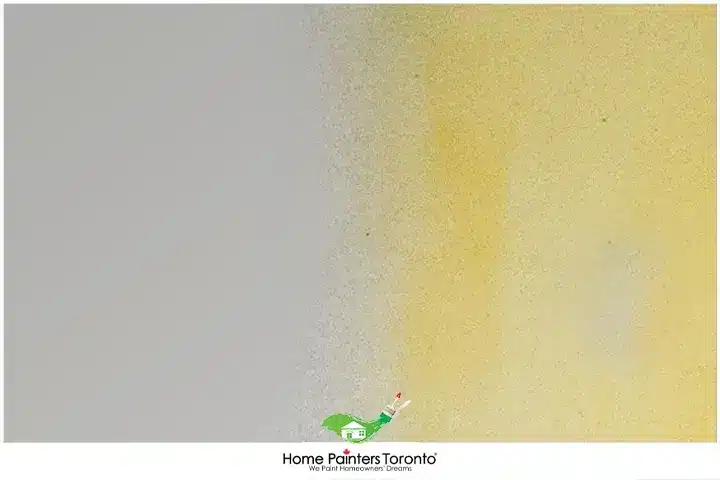
DIY or Professional Help: Making the Right Choice for Your House Painting Needs
As a business owner, entrepreneur, or simply a homeowner, it can be difficult to decide whether to embark on a house painting project yourself or hire professionals. At Home Painters Toronto, we’re here to clarify this decision-making process in an approachable yet detailed manner.
Advantages and Challenges of DIY Painting
Opting for a DIY approach can often lead to significant savings. You have direct control over the process and can work at your own pace. However, this approach does require a commitment of time, physical effort, and a learning curve if you’re new to painting.
Key considerations for DIY:
- Time: Do you have the time to devote to the project?
- Confidence: Are you confident you can deliver the desired result?
- Effort: Are you ready for the physical exertion and potential challenges you may encounter?
If all these answers are ‘yes’, then the DIY approach could be a fit for you.
Advantages and Limitations of Professional Service
On the other hand, professional painting services bring considerable expertise and speed. They can handle complex tasks and potential problems more effectively, offering an overall higher quality finish. However, this choice does come with a higher price tag.
Key Considerations for Professional Help:
- Budget: Are you comfortable with the cost of hiring professionals?
- Quality: Is the quality of finish and speed important to you?
- Ease: Are you seeking an effortless solution, with minimal involvement in the process?
If these considerations align with your needs, it might be worthwhile to invest in a professional painting contractor.
Making Your Choice
Ultimately, the choice between DIY and professional help hinges on a balance of time, cost, effort, and the quality of finish you desire. Neither choice is inherently superior—it’s about what works best for your specific circumstances and needs.
Remember that a good paint job isn’t only about aesthetic appeal. It can impact your home maintenance costs and even your property value. By identifying and addressing these paint defects early, you remain in charge of your home’s looks and health.
More Interesting Blogs Related to
“10 MOST COMMON HOUSE PAINTING DEFECT PLUS REMEDIES – PART 2”
Home Painter Toronto offers full-service residential painting in the GTA area. We can help you with all your exterior and interior painting needs. Additionally, we can recommend the best paint colours for a small hallway, walls, and ceilings. Contact us today to get a FREE estimate! Call 416.494.9095 or email [email protected]. Also, don’t forget to check out and follow us on our social media channels below!


